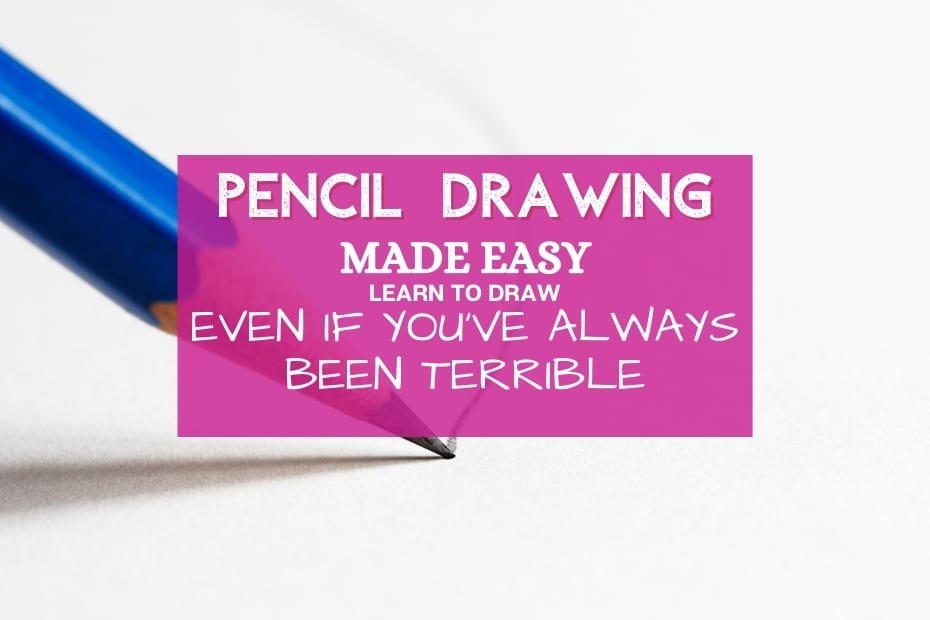Yeah sounds crazy right? Like many others out there, I have been drawing stick figures and worse for most of my life. I always admired how people could even know how to draw anything remotely better. The truth is, anyone can get on a whole other level of drawing. Yes, that’s right, you could learn to draw even if you’ve never been able to.
This post contains affiliate links. I may be compensated a small amount if you should choose to click and purchase something through them. This is at no extra cost to you.
How to start pencil drawing easily
- Start with Basic Shapes
- Before diving into complex subjects, master drawing basic shapes like circles, squares, rectangles, triangles, and ovals. Practice drawing these shapes from different angles and perspectives to develop your hand-eye coordination and spatial awareness.
- Learn Fundamental Techniques:
- Explore fundamental drawing techniques such as line drawing, hatching, cross-hatching, stippling, and blending. Experiment with varying pressure on your pencil to create different line weights and textures. Understanding these techniques will provide you with a solid foundation for more advanced drawing skills.
- Study Light and Shadow:
- Delve into the principles of light and shadow, also known as chiaroscuro, to add depth and dimension to your drawings. Learn how light sources interact with objects to create highlights, mid-tones, and shadows. Practice shading techniques such as blending, stippling, and cross-hatching to render realistic three-dimensional forms.
- Explore Composition:
- Experiment with different compositional techniques to create visually compelling drawings. Consider factors such as balance, symmetry, rhythm, and focal points when arranging elements within your composition. Explore the rule of thirds, leading lines, and negative space to create dynamic and harmonious compositions.
- Practice Regularly:
- Consistent practice is key to improving your drawing skills. Set aside dedicated time each day or week to practice drawing. Whether it’s sketching in a sketchbook, working on structured exercises, or completing finished drawings, regular practice will help you develop confidence and proficiency in drawing.
- Draw from Observation:
- Drawing from observation is an essential skill for any artist. Spend time observing real-life subjects such as still life arrangements, landscapes, architecture, and people. Pay attention to details, proportions, and spatial relationships as you translate what you see onto paper. Drawing from observation will sharpen your observational skills and enhance your ability to capture the world around you.
- Seek Inspiration:
- Draw inspiration from a wide range of sources, including nature, art history, contemporary artists, and everyday life. Visit art galleries, museums, and exhibitions to expose yourself to different styles, techniques, and artistic movements. Take note of artworks that resonate with you and analyze what makes them compelling. Experiment with incorporating elements from different artists and styles into your own work while developing your unique artistic voice.
- Experiment with Different Tools:
- Explore a variety of drawing tools beyond traditional pencils, including charcoal, graphite sticks, colored pencils, pastels, and ink. Each medium offers unique characteristics and challenges, allowing you to experiment with different textures, colors, and effects. Don’t be afraid to step out of your comfort zone and try new materials to expand your artistic horizons.
- Receive Feedback:
- Seek feedback on your drawings from peers, mentors, teachers, or online communities. Constructive criticism can provide valuable insights into your strengths and areas for improvement. Be open to receiving feedback with an objective and growth-oriented mindset, and use it as a learning opportunity to refine your skills and develop as an artist.
- Embrace Mistakes:
- Mistakes are an inevitable part of the creative process and essential for learning and growth. Instead of viewing mistakes as failures, embrace them as opportunities to learn and improve. Analyze what went wrong, identify areas for improvement, and apply these lessons to your future drawings. Remember that every artist makes mistakes, and it’s through perseverance and resilience that you’ll continue to progress and evolve as an artist.
- Document Your Progress:
- Keep a sketchbook or digital portfolio to document your artistic journey and track your progress over time. Regularly review your earlier drawings to see how far you’ve come and celebrate your achievements. Reflect on your artistic development, identify patterns of improvement, and set goals for future growth. Documenting your progress will help you stay motivated, inspired, and focused on your artistic goals.
- Stay Persistent:
- Developing proficiency in drawing takes time, dedication, and perseverance. Stay committed to your practice routine, even when faced with challenges or setbacks. Set realistic goals for yourself, break them down into manageable steps, and celebrate your progress along the way. Remember that improvement is gradual and incremental, and every drawing you create brings you one step closer to achieving your artistic aspirations.

